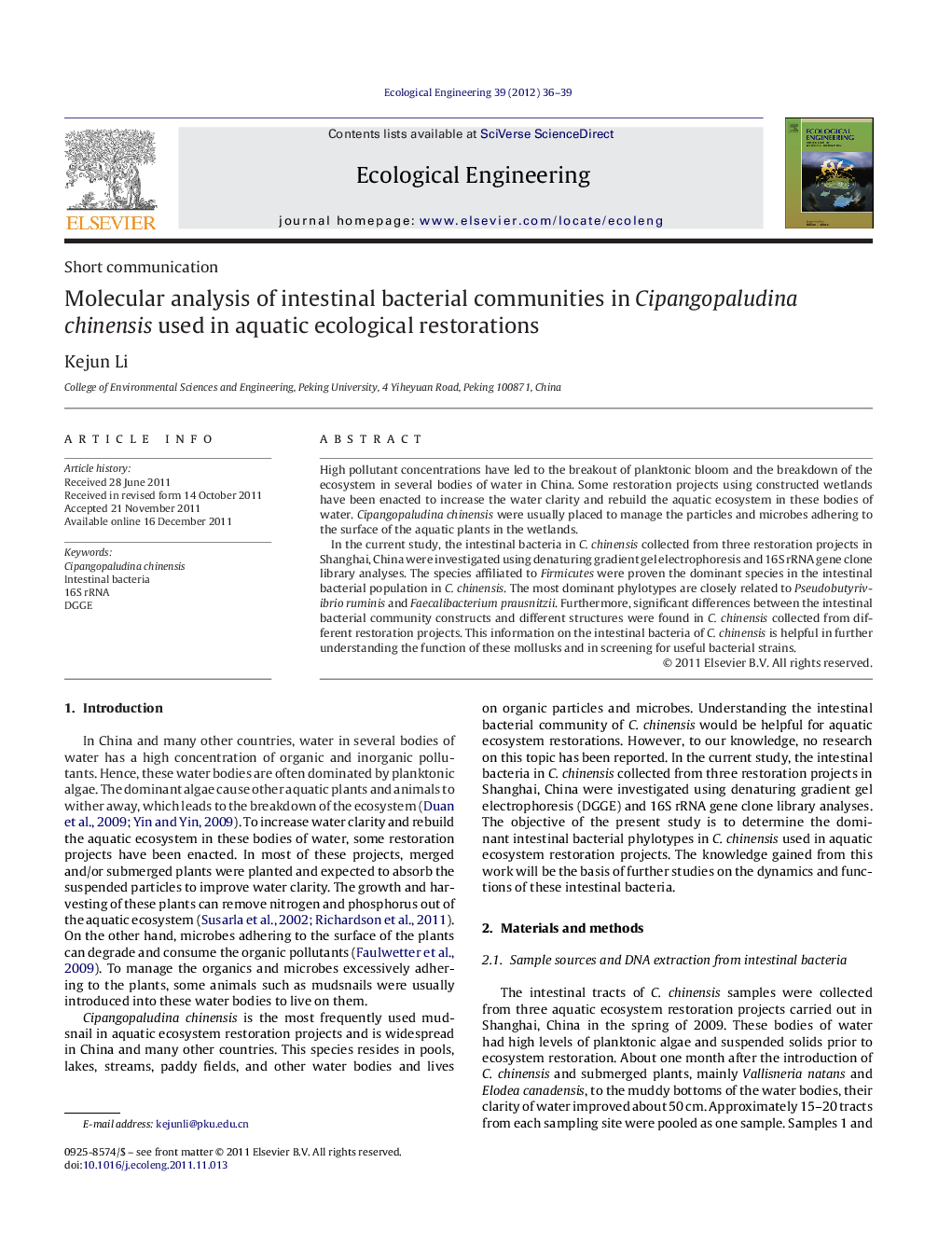| Article ID | Journal | Published Year | Pages | File Type |
|---|---|---|---|---|
| 4390205 | Ecological Engineering | 2012 | 4 Pages |
High pollutant concentrations have led to the breakout of planktonic bloom and the breakdown of the ecosystem in several bodies of water in China. Some restoration projects using constructed wetlands have been enacted to increase the water clarity and rebuild the aquatic ecosystem in these bodies of water. Cipangopaludina chinensis were usually placed to manage the particles and microbes adhering to the surface of the aquatic plants in the wetlands.In the current study, the intestinal bacteria in C. chinensis collected from three restoration projects in Shanghai, China were investigated using denaturing gradient gel electrophoresis and 16S rRNA gene clone library analyses. The species affiliated to Firmicutes were proven the dominant species in the intestinal bacterial population in C. chinensis. The most dominant phylotypes are closely related to Pseudobutyrivibrio ruminis and Faecalibacterium prausnitzii. Furthermore, significant differences between the intestinal bacterial community constructs and different structures were found in C. chinensis collected from different restoration projects. This information on the intestinal bacteria of C. chinensis is helpful in further understanding the function of these mollusks and in screening for useful bacterial strains.
